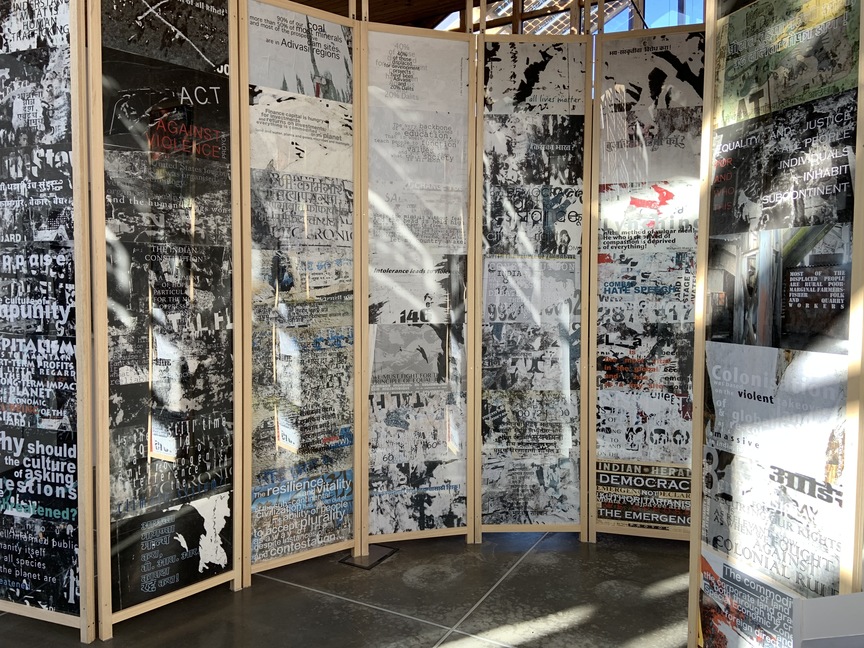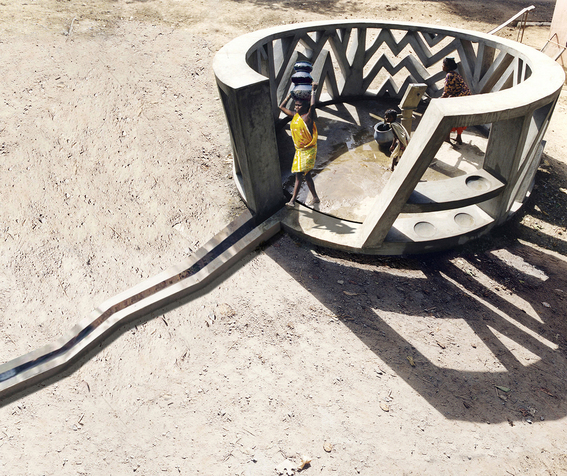-
From Current Issue
-
- Editor’s Letter Fire in the Heart
- Reviews I Gusti Ayu Kadek Murniasih
- Reviews 11th Seoul Mediacity Biennale: “One Escape at a Time”
- Dispatch Networked China
- One on One Monira Al Qadiri on Yukio Mishima
- Essays The rise of independent art spaces in pandemic-era Shanghai
- Features Tuan Andrew Nguyen
- Table of Contents
- Web Exclusives
- Archive
- Subscribe

R
E
V N
E
X
T
Installation view of NAVJOT ALTAF’s solo exhibition “Samakaalik: Earth Democracy and Women’s Liberation,” at Parco Arte Vivente, Turin, 2019–20. Courtesy the artist and Parco Arte Vivente.
Meerut-born Navjot Altaf, who lives between India’s central Bastar district and Mumbai, is known for her theory-based and often collaborative art practice, which probes the sociopolitical realities of her native country, with global resonances. Her projects have dealt with environmental destruction, the disfranchised condition of women, and the toll that advanced capitalism has taken on Indigenous populations. For Altaf’s solo exhibition at Turin’s Parco Arte Vivente, curator Marco Scotini selected work from the 1970s to the present day, foregrounding the simultaneous (Samakaalk in Hindi) exploration of ecology and feminism in the artist’s research.
Wheelers Book Stall Re-visited (2018) opened the show, linking Altaf’s past and present activism. In the early 1970s, she was involved in the Progressive Youth Movement in Mumbai, participating in the production of political posters. The installation includes 126 identically sized digital copies of these images, mounted in floor-to-ceiling wood frames recalling colorful film-strips. The prints are superimposed with silk-screened slogans, and were developed together with social activists, teachers and students from various schools to address issues such as sexual violence, authoritarianism, civil resistance, and censorship. "In the 1970s,” Altaf said, “people could use walls as a free space for communication. Today they are fined for it.” In the context of the present right-wing government’s control of public space in India, Altaf’s work is ever-more relevant and urgent.
Six photographic prints illustrated Nalpar (2000– ), Altaf’s collaborative public art intervention with the Adivasi peoples in India’s Bastar region (Chhattisgarh), where the artist moved to in 1998. The project provided a group of female artists with an opportunity to practice independently, and involved the aesthetic transformation of the sites of water hand-pumps (Nalpars) where women fetch water daily. Built around the hand-pumps, level concrete platforms are sheltered by high walls decorated with perforated motifs, inspired by the Adivasi’s symbols and daily objects. Incorporating structural elements to help lift heavy water vessels, the platforms are designed to encourage women’s interactions with each other and prevent water stagnation, which breeds diseases. Born of a commitment to improve women’s daily conditions, Nalpar is exemplary of Altaf’s consistent engagement with art as an agent of social change.
Soul Breath Wind (2014–18), a two-channel video projection, addressed the ruinous consequences of reckless mining in southern Bastar and northern Chhattisgarh. Mesmeric long takes linger over gutted hills and polluted rivers that have taken on unnaturally vivid colors. While watching the projection, one hears the voices, accompanied by on-screen text, of members of the local communities denouncing governmental connivance with the mining industry in grabbing the land they protected for centuries, and wrecking local economies that depend on farming and forest products in the name of questionable “progress.” Nocturnal shots capture moments of a festival celebrating nature, banned by local authorities allegedly for fear of Naxalite attacks. A Maoist guerrilla faction, Naxalites support the Adivasi’s struggle for land rights. Advasi villagers suspected of connections with the Naxalites are punished by authorities and deported to military camps. An intense viewing experience, Soul Breath Wind is at once an ode to the Adivasi’s politics of resistance and an incentive to ponder on iniquitous forms of unsustainable development.
More poetic was Patterns which Connect (2018), which conjured nature’s fragile interrelations. Neatly arranged in a glass case like archaeological specimens, 20 plaster and clay sculptures evoked rock samples in different hues of ocher. The rocks were imprinted with the shapes of different insects, like fossils of extinct species, and reflected on the idea that even the smallest insect’s extinction affects the entire ecosystem.
“Samakaalik: Earth Democracy and Women’s Liberation” provided meaningful insight into Altaf’s rich and compelling research. Imbued with empathy and tapping into pressing issues that are relevant worldwide, Altaf’s practice is a life-long commitment to the belief that through dialogue and collaboration, art—as with all human actions—can engender positive change, a message that lingered long after one left the exhibition.
Navjot Altaf’s “Samakaalik: Earth Democracy and Women’s Liberation” is on view at the Parco Arte Vivente, Turin, until February 16, 2020.
To read more of ArtAsiaPacific’s articles, visit our Digital Library.


















